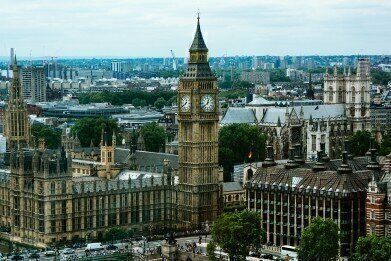Air Clean Up
2017 - New Year, New London?
Jan 30 2017
For the past five years running, London has broken air quality laws imposed by the EU, accruing millions of pounds’ worth of fines and endangering the lives of its citizens in the process. But with 2017 signalling an opportunity for a fresh start, could we see a new London in the coming 12 months?
Maybe not. Less than one week into the New Year, Brixton Road in Lambeth has already exceeded the annual limit appointed to it, thus breaking the law in record time.
Start as you mean to go on?
Under EU law, concentrations of nitrogen dioxide (NO2) cannot exceed 200mg/m3 more than 18 times in a year, but by January 5th, Brixton Road had already fallen foul of that ruling. Last year, the road in question saw illegal levels of pollution on 502 occasions – over 27 times the legal allowance.
Even more shockingly, Brixton Road wasn’t even the worst offender. Putney High Street, which falls prey to trapped pollution clouds due to the height of its buildings, was the most common repeat offender, breaking the limit a staggering 1,221 times.
Elsewhere, preliminary data reveals that 59 of the 97 sites in the capital that were monitored were guilty of transgression. Other areas of major concern were Oxford Road, Marylebone Road and The Strand.
Diesel the chief culprit
Though there are a variety of factors as to why air pollution across London is so bad, the biggest contributor is the NO2 fumes spouted by diesel engines. Previously, the government had encouraged citizens to invest in diesel cars due to the fact that they emit less carbon dioxide (CO2) than their petrol counterparts.
However, recent studies have shown that diesel engines are guilty of emitting far more NO2 than petrol ones, which in turn has led to massively increased concentrations of the contaminant in London’s streets. Last year, the European Environment Agency released a report which named the UK as having the second most deaths attributable to NO2 inhalation in Europe, behind Italy.
In December last year, a number of cities around the world (including Athens, Madrid, Mexico City and Paris) signalled their intention to phase out all diesel vehicles from inside the city limits by 2025. Campaigners have petitioned for the UK government to do the same.
The London mayor fighting an uphill battle
Since arriving in the post of mayor in May 2016, Sadiq Khan has made encouraging signs about his attitude towards the dire state of air quality in the capital. Not only has pledged to bring in ultra-low emissions zone (ULEZs) one year earlier than planned, he has also indicated he will double financial backing to improved airwaves up to £875 million over the coming five years.
The mayor himself has called on the government to back him up by rolling out similar plans to curb emissions in other cities across the nation. To date, the government has been taken to court twice (and lost twice) by environmental law firm ClientEarth for their failure to appropriately address the issue of pollution in the UK.
However, they remain bullish in their approach to the subject. “We are firmly committed to improving the UK’s air quality and cutting harmful emissions. We will update our air quality plans in the spring to further improve the nation’s air quality,” said a government spokesman, pointing to the £2 billion that has been spent over the last six years in green initiatives.
Events
May 05 2024 Seville, Spain
May 13 2024 Munich, Germany
May 23 2024 Beijing, China
May 23 2024 Beijing, China
Jun 10 2024 Algiers, Algeria














